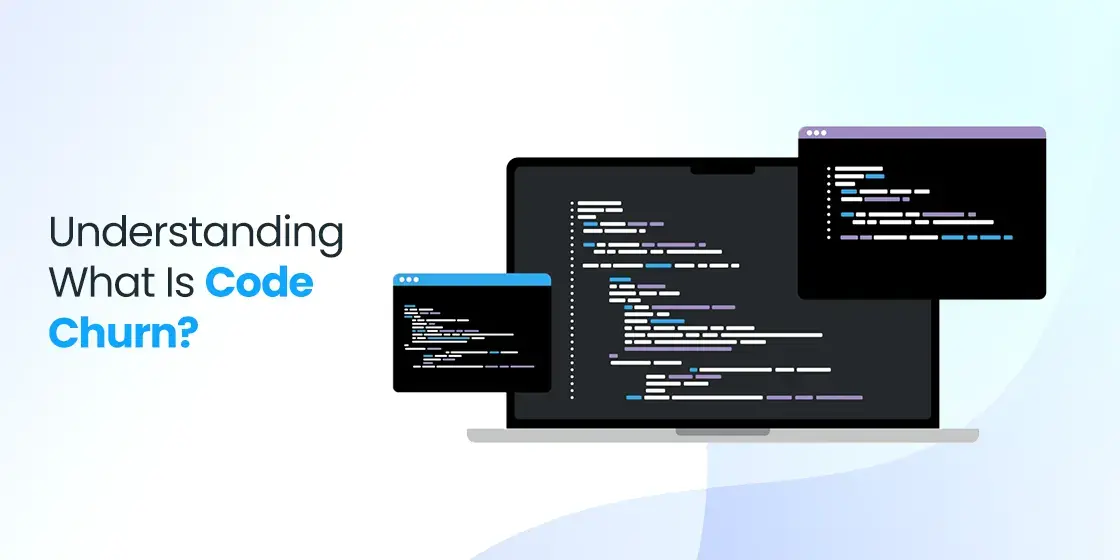Table of Content
Know How to Reduce Code Churn While Developing Software Projects
While developing a software application, it is important to measure the overall time developers are taking to write the backend code. If they are taking more time or missing deadlines that are assigned for the tasks, you need to check the status of their code churn rate. Now, a lot of beginners will ask what is code churn and how it should be measured while working on a project. It is basically a term given to the process of writing single program code again and again. This is usually done due to facing quality issues, or getting updates in the component for which the code has been required.
It is quite important to control the code churn rate before it goes out of your hands. Those teams that do not pay attention to the code churn rate, always faces delay in completing projects. They do not look at the process of code repetition which is actually eating a lot of their time. This marks the difference between the amateurs and experienced software development services. Companies with better knowledge and organized work structure always monitor the churn status, as it helps them to rectify mistakes and get better with time.
In this blog, we will let you know what is code churn rate and why controlling it is important for software companies to become successful in the market. Let us start from the basics looking at the definition of code churn rate in detail below.
What is Code Churn?

Code churn rate in software development refers to the frequency with which code is added, modified, or deleted in a codebase over a specific period. It is a metric used to quantify the amount of change occurring within a software project. High code churn can indicate active development and frequent updates, but it may also suggest potential instability or inefficiencies in the development process. Conversely, a low churn rate might indicate a stable codebase or, in some cases, a stagnating project with little to no ongoing development.
Analyzing code churn rate can provide insights into the health and productivity of a development project. For instance, consistent and moderate code churn is often associated with steady progress and iterative improvements. However, excessively high churn rates may point to issues such as poor initial design, or misaligned requirements, all of which can disrupt development timelines. On the other hand, very low churn rates over extended periods might suggest insufficient innovation, lack of feature development, or possible team complacency.
Managing code churn rate effectively involves balancing the need for continuous improvement and innovation with the imperative to maintain code stability and quality. By monitoring churn rates, development teams can identify patterns that may require intervention, such as excessive rework or insufficient code review processes. Ultimately, maintaining an optimal churn rate helps ensure that the software evolves in a controlled and sustainable manner, fostering both high-quality code and efficient development practices.
Why is Code Churn a Big Problem?

Code churn can be a significant problem in software development because it often indicates instability and inefficiency within the project. High churn rates suggest that code is frequently being rewritten, modified, or deleted, which can lead to inconsistencies and bugs. This constant change makes it difficult to ensure the reliability and stability of the software, as new changes can introduce unforeseen issues. Developers may spend a substantial amount of time addressing these new problems, which detracts from their ability to add new features or make improvements in the project.
Additionally, excessive code churn can reflect deeper systemic issues within the development process. For example, it might point to poor initial design decisions that require frequent adjustments or indicate misalignment between development teams and project requirements. Frequent changes to the codebase can also imply that the team is struggling with unclear or evolving functional requirements. This inefficiency not only increases development costs but also puts a strain on team morale.
From a project management perspective, high code churn complicates the process of tracking progress and estimating timelines. It becomes challenging to predict when features will be complete and when the product will be ready for the release. High churn rates can also impede collaboration, as developers may find it difficult to keep track of the latest changes and understand the current state of the codebase. This can lead to integration issues, and a fragmented understanding of the project among team members, ultimately compromising the quality of the final product.
How to Control Code Churn Rate?

It is quite important to monitor and control the code churn rate regularly. A lot of teams do not know how to keep this thing in check, hence the below given points will help them to understand all the useful rules. Let’s take a quick look at them.
Measure Churn Rate
Improving any aspect of software development begins with measurement, and this principle applies to managing code churn as well. The first essential step in keeping code churn under control is to measure it accurately. By systematically tracking this metric, you gain valuable insights into the frequency and nature of changes occurring within the codebase. Detailed measurement allows you to understand patterns of code modification, addition, and deletion, providing a clear picture of the project’s development dynamics.
Once you have a robust system in place to monitor code churn, you are better equipped to respond proactively when the metric indicates potential problems. By analyzing the collected data, you can identify trends that suggest the churn rate is becoming excessive, such as spikes in code changes following new feature implementations or during periods of refactoring. With this information at hand, you can implement targeted interventions, such as improving code review processes, refining initial design specifications, or enhancing communication and alignment within the development team.
Fuel innovation by leveraging bespoke software solutions. Get in touch with our team of experts to build cutting-edge software products.
Get a QuoteIssue Alerts
While tracking the code churn metric is crucial, it represents only the initial step in effective management. The subsequent and equally important step is ensuring that this information is effectively communicated across the development team. To facilitate this, the tool used to measure code churn must be capable of integrating seamlessly with the organization’s communication platforms, such as Slack or Microsoft Teams. By setting up this integration, you can automate the process of sending real-time alerts to the relevant stakeholders whenever the churn rate exceeds predefined thresholds.
Disseminating this information promptly allows team members to take timely and appropriate actions to address high code churn before it escalates into more significant problems. For instance, developers can prioritize code reviews, initiate discussions to clarify requirements, or adjust their workflows to reduce unnecessary changes. By embedding code churn alerts into the daily communication flow, the team can maintain a heightened awareness of the codebase’s stability. This integration not only fosters a culture of transparency but also ensures that potential disruptions are managed efficiently every time.
Fix Root Cause
To reduce code churn rate in software development, the first step is to enhance the planning and design phases of the development process. This involves thorough requirement analysis, clear documentation, and involving all stakeholders in the initial stages to ensure that the project scope and objectives are well understood and agreed upon. Using Agile methodologies, such as iterative development and continuous feedback loops, can help in adapting to changes more efficiently and reducing the need for extensive rework.
The second step is to invest in robust web application testing and continuous integration/continuous deployment (CI/CD) practices. Automated testing, including unit tests, integration tests, and end-to-end tests, ensures that code changes are validated continuously and issues are detected early in the development cycle. Implementing CI/CD pipelines facilitates quick and reliable deployments, allowing developers to integrate their changes more frequently and confidently. Additionally, fostering a culture of regular refactoring and technical debt management helps maintain code quality over time.
Frequently Asked Questions
| What is code churn? Code churn refers to the frequency and extent of code changes in a software project. High code churn can indicate instability or frequent rework, potentially leading to reduced code quality and increased project risks. |
| What are the causes of higher code churn? Higher code churn is often caused by unclear requirements, poor initial design, and inadequate QA testing practices. Additionally, lack of developer experience and insufficient code reviews can contribute to the need for frequent and extensive code modifications. |
| How to fix the code churn rate? To reduce code churn rate, focus on thorough initial planning and design. Meanwhile, also try to implement effective testing and CI/CD practices, and foster a culture of continuous improvement and collaboration among developers. |
Final Words
That concludes our entire article in which we have discussed what is code churn and how it should be reduced to enhance the efficiency of any project. Keeping a close eye on code churn is important for software teams, as it allows them to cut down repetitive work while maintaining the quality of code. Those who do not pay attention to this prospect, always remain stranded at a single point of the project. It is therefore recommended to keep a check on your project’s code churn, because it allows you to enhance the efficiency and scalability of the code by adapting the right methods.
Empower your digital initiatives with BariTechSol, a premier custom software development company. Our skilled team tailors cutting-edge solutions to your unique needs. Elevate your tech experience and stay ahead in the digital realm. Partner with BaritechSol and code the success of your next big idea.


